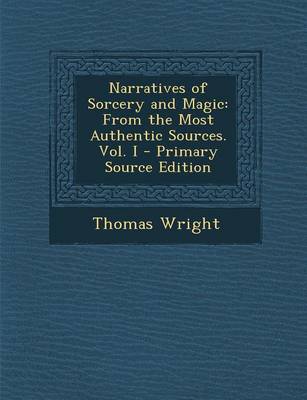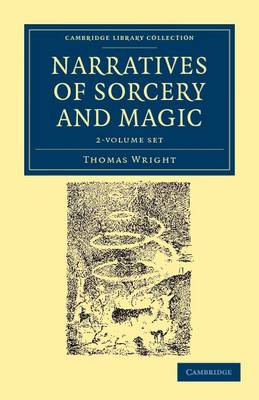Cambridge Library Collection - Spiritualism and Esoteric Knowledge
1 primary work • 4 total works
Volume 2
The English historian and antiquary Thomas Wright (1810-70) co-founded and joined a number of antiquarian and literary societies. He was greatly interested in Old English, Middle English and Anglo-Norman texts, and in the 1840s and 1850s he published widely within these areas. Gradually his focus shifted to the archaeology of Roman Britain and to Anglo-Saxon cemeteries. Although much of Wright's research has been completely superseded, his work is still considered worth consulting, as he collected material not readily available elsewhere. This two-volume 1851 publication is testimony to Wright's interest in folklore, sorcery and legend. In Volume 2, he maintains a broad perspective while surveying instances of witchcraft in the seventeenth century. Wright writes about such famous cases as the Earl of Somerset, the Ursuline nuns of Loudun, and the Mohra witches in Sweden, to whom the Devil appeared with a red beard and a high-crowned hat.
The English historian and antiquary Thomas Wright (1810-70) co-founded and joined a number of antiquarian and literary societies. He was greatly interested in Old English, Middle English and Anglo-Norman texts, and in the 1840s and 1850s he published widely within these areas. Gradually his focus shifted to the archaeology of Roman Britain and to Anglo-Saxon cemeteries. Although much of Wright's research has been completely superseded, his work is still considered worth consulting, as he collected material not readily available elsewhere. This 1851 publication is testimony to Wright's interest in folklore, sorcery and legend. Volume 1 deals with European sorcery, and sixteenth-century English characters such as Dr John Dee; it also examines the legend of Dr Faustus. Volume 2 surveys the seventeenth century, and includes such important instances as the alleged demonic possession of the Ursuline nuns of Loudun, and the witchcraft hysteria which led to the Salem Witch Trials.
The English historian and antiquary Thomas Wright (1810-70) co-founded and joined a number of antiquarian and literary societies. He was greatly interested in Old English, Middle English and Anglo-Norman texts, and in the 1840s and 1850s he published widely within these areas. Gradually his focus shifted to the archaeology of Roman Britain and to Anglo-Saxon cemeteries. Although much of Wright's research has been completely superseded, his work is still considered worth consulting, as he collected material not readily available elsewhere. This two-volume 1851 publication is testimony to Wright's interest in folklore, sorcery and legend. In Volume 2, he maintains a broad perspective while surveying instances of witchcraft in the seventeenth century. Wright writes about such famous cases as the Earl of Somerset, the Ursuline nuns of Loudun, and the Mohra witches in Sweden, to whom the Devil appeared with a red beard and a high-crowned hat.
The English historian and antiquary Thomas Wright (1810-70) co-founded and joined a number of antiquarian and literary societies. He was greatly interested in Old English, Middle English and Anglo-Norman texts, and in the 1840s and 1850s he published widely within these areas. Gradually his focus shifted to the archaeology of Roman Britain and to Anglo-Saxon cemeteries. Although much of Wright's research has been completely superseded, his work is still considered worth consulting, as he collected material not readily available elsewhere. This two-volume 1851 publication is testimony to Wright's interest in folklore, sorcery and legend. In Volume 1 the author accounts of sorcery across Europe, and he considers the legendary Dr Faustus as an archetypal magician who called 'the demon'. Wright also discusses the place of the occult in England during and after the Reformation, writing about magicians such as John Dee, and describing King James I's views on witchcraft.


